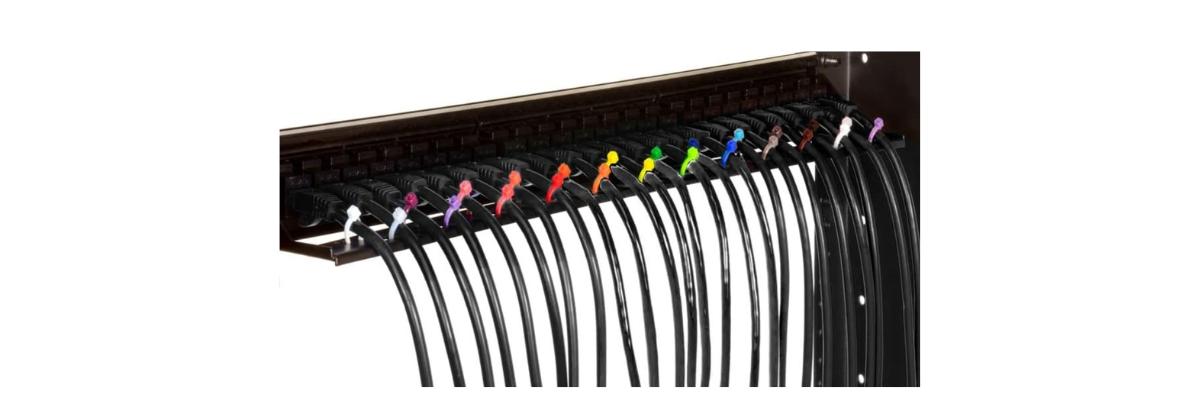1-877-445-6744 Live Support
1-877-445-6744 Live Support

The variety in zip tie designs exists to meet the diverse needs of industries and projects. Factors such as temperature, exposure to UV light, chemical resistance, and load-bearing capacity can dictate the type of zip tie you should use. By choosing the correct type, you can ensure durability, safety, and efficiency in your application.
Below, we’ll delve into the different types of zip ties, their unique features, and the scenarios in which they excel.
Standard nylon zip ties are the most commonly used type, found in almost every toolbox. They are ideal for light-duty to medium-duty applications.
Key Features:
• Made of durable nylon
• UV-resistant variants available
• Operating temperature: -40°F to 185°F (-40°C to 85°C)
• Tensile strength: Ranges from 18 lbs to 175 lbs
Common Uses:
• Organizing cables and wires
• Bundling lightweight objects
• Temporary fixes in home repairs
UV-resistant zip ties are specially designed to withstand exposure to sunlight, making them perfect for outdoor use.
Key Features:
• Infused with carbon black to enhance UV resistance
• Available in black for identification
• Can last years in direct sunlight without degradation
Common Uses:
• Securing outdoor wires and cables
• Gardening and landscaping
• Installing solar panels
For applications requiring higher strength and durability, heavy-duty zip ties are the go-to choice.
Key Features:
• Tensile strength: Ranges from 120 lbs to 250+ lbs
• Often wider and thicker than standard ties
• Made to handle extreme conditions
Common Uses:
• Bundling heavy cables and hoses
• Automotive applications (e.g., securing hoses under the hood)
• Construction projects
Metal zip ties are incredibly strong and resistant to heat, chemicals, and corrosion, making them suitable for extreme environments.
Key Features:
• Made of stainless steel
• Tensile strength: Up to 350 lbs or more
• Can withstand temperatures over 1000°F (537°C)
Common Uses:
• Industrial applications
• Securing objects in chemical plants or marine environments
• Fire-resistant installations
Releasable zip ties are designed for reuse, offering flexibility in applications where adjustments are necessary.
Key Features:
• Releasing mechanism allows for multiple uses
• Available in nylon or metal versions
• Less wasteful than single-use ties
Common Uses:
• Temporary bundling of items
• Organizing cables that require frequent changes
• DIY projects
Mountable head zip ties feature a small hole or tab that allows them to be screwed or nailed into a surface.
Key Features:
• Built-in mounting hole for securing to walls or panels
• Available in various lengths and tensile strengths
Common Uses:
• Securing cables along walls or ceilings
• Organizing wires in server rooms
• Automotive applications
Colored zip ties serve both functional and aesthetic purposes. They are useful for organizing and identifying items.
Key Features:
• Available in a variety of colors
• UV-resistant versions available
• Customizable lengths and strengths
Common Uses:
• Color-coding cables for easy identification
• Decorating or crafting
• Managing IT cables in server rooms
Heat-resistant zip ties are built to withstand high temperatures, making them indispensable for demanding environments.
Key Features:
• Can endure temperatures of up to 500°F (260°C)
• Often made of specialized materials like fluoropolymer
Common Uses:
• Securing wires in automotive and aerospace applications
• Industrial machinery maintenance
• High-temperature environments
Selecting the correct zip tie depends on several factors:
1. Environment: Consider exposure to UV light, moisture, or chemicals.
2. Temperature: Use heat-resistant or flame-retardant ties for high-temperature conditions.
3. Strength: Evaluate the load capacity required for your application.
4. Reusability: Opt for releasable or Velcro ties if adjustments are needed frequently.
5. Special Features: Look for unique designs, such as double-headed or mountable ties, for specific needs.
To ensure the longevity and effectiveness of your zip ties:
• Avoid over-tightening: This can damage both the zip tie and the bundled materials.
• Trim excess length: Use a flush cutter for a clean finish.
• Inspect periodically: Replace zip ties that show signs of wear, especially in outdoor or high-stress environments.
• Use the right tool: Specialty tensioning tools ensure consistent tightening and prevent damage.
There are many types of zip ties, each with its own strengths and weaknesses. From standard nylon ties for everyday tasks to heavy-duty and heat-resistant versions for specialized applications, the variety ensures there's a perfect zip tie for every need. By understanding the features and uses of each type, you can make informed decisions and achieve optimal results in your projects.
Whether you're a DIY enthusiast, an electrician, or an industrial worker, investing in the right type of zip tie can make a world of difference. Remember, a well-organized and securely bundled setup not only looks professional but also enhances safety and functionality.